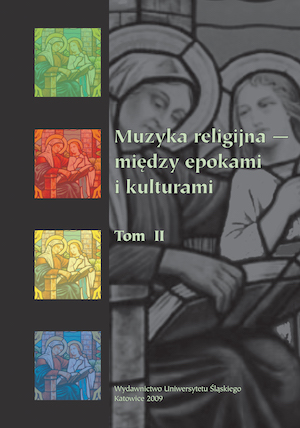Cztery motety kopernikowskie na chór mieszany a cappella Tadeusza Kasserna
Cztery motety kopernikowskie on a mixed choir a capella by Tadeusz Kassern
Author(s): Violetta Kostka
Subject(s): Music
Published by: Wydawnictwo Uniwersytetu Śląskiego
Summary/Abstract: The most famous religious works by Tadeusz Kassern (1904—1957) are Cztery motetykopernikowskie on a mixed choir from 1937. Their main feature is a reference to Renaissancetraditions, which can be seen both in the text and music. The basis of these works constitutestexts from a religious poem by Mikołaj Kopernik entitled Septem sidera from 1950, herein the Polish translation by Jan Kasprowicz. In the music layer, melody, developing via longphrases and relying on, above all, big and small secunds, is prominent. The beginning motifof Bogurodzica appears among a wide array of other motives. Harmony is built mainly of consonanceco-sounds, i. e. tertial accords in the main forms, sporadically intertwined by dissonanceco-sounds. Motety are developed by means of many voices, reaching voice 5. They arebased on three types of counterpoint: syntactic imitations, nota contra notam counterpointand free counterpoint. Some of the fragments are characterised by iconic reflections similarto madrigalisms, as well as music symbols similar to rhetorical figures. Although Kassern undoubtedlyaimed at creating a Neo-Renaissance style, he did not reject some of the contemporarycomposing solutions in his works. It is underlined by a varied rhythmics, a detailedinterpretation of a poetical text, an arch form and introduction of motets into the constructionof a cyclical nature.
Book: Muzyka religijna – między epokami i kulturami. T. 2
- Page Range: 103-113
- Page Count: 11
- Publication Year: 2009
- Language: Polish
- Content File-PDF

